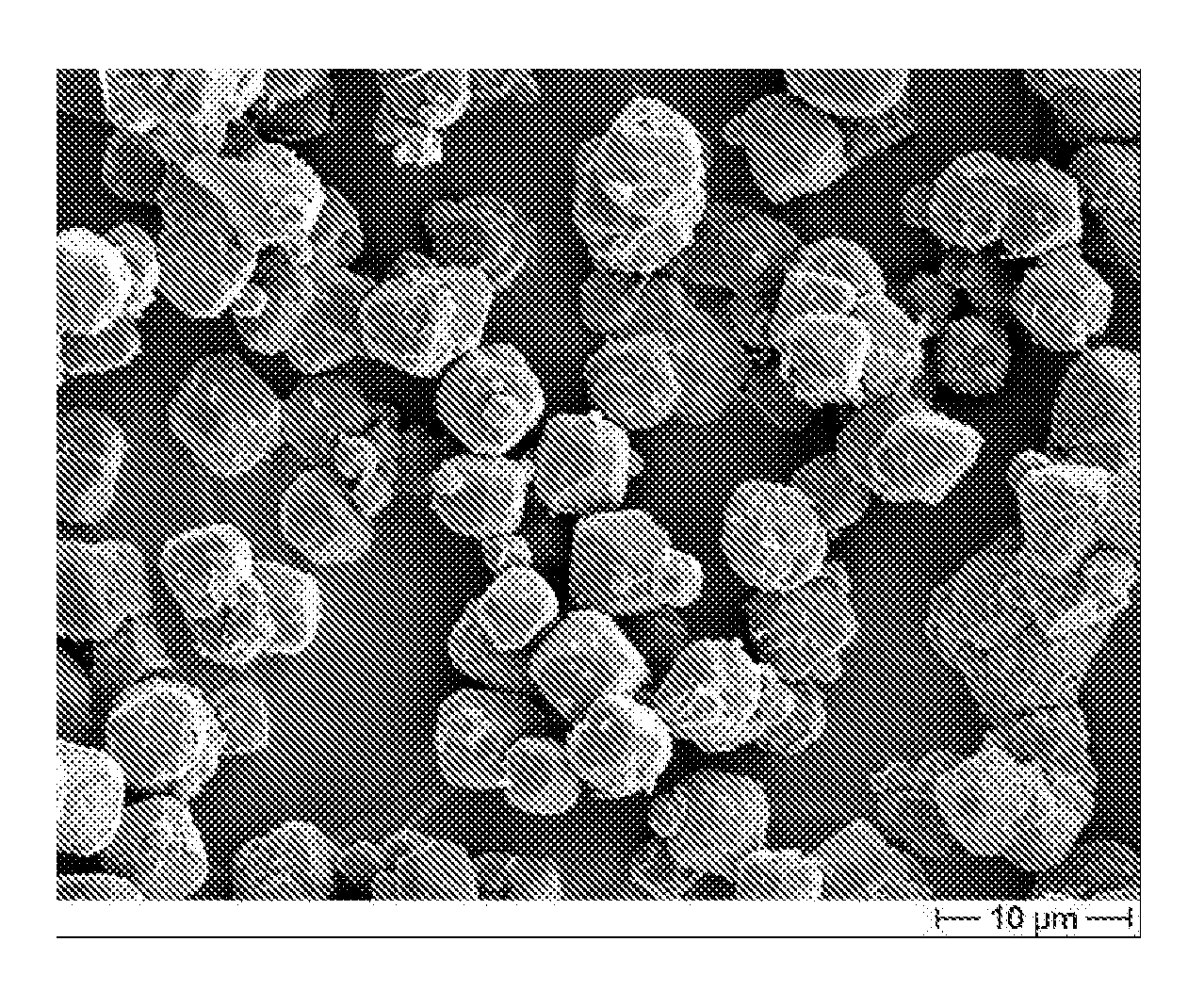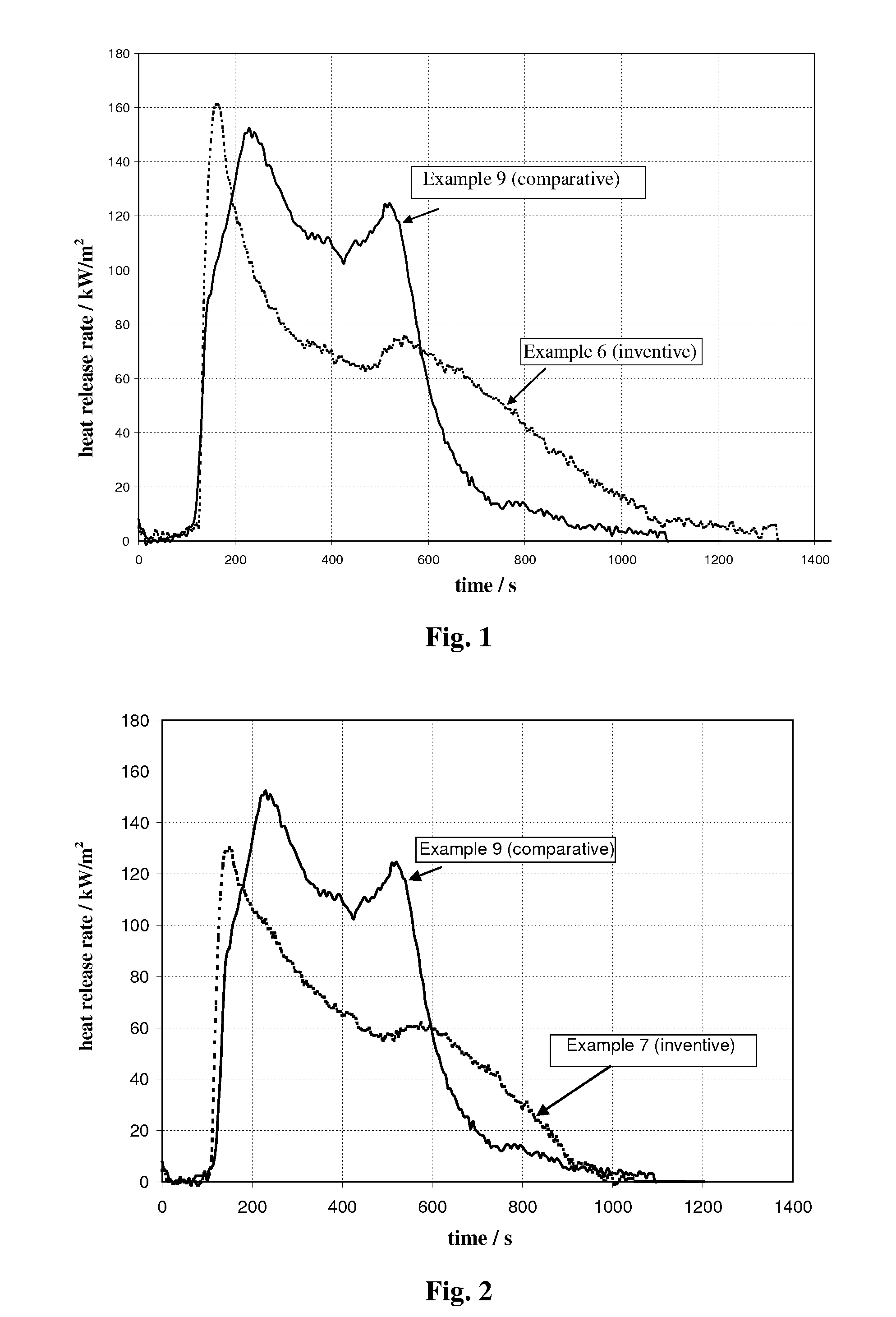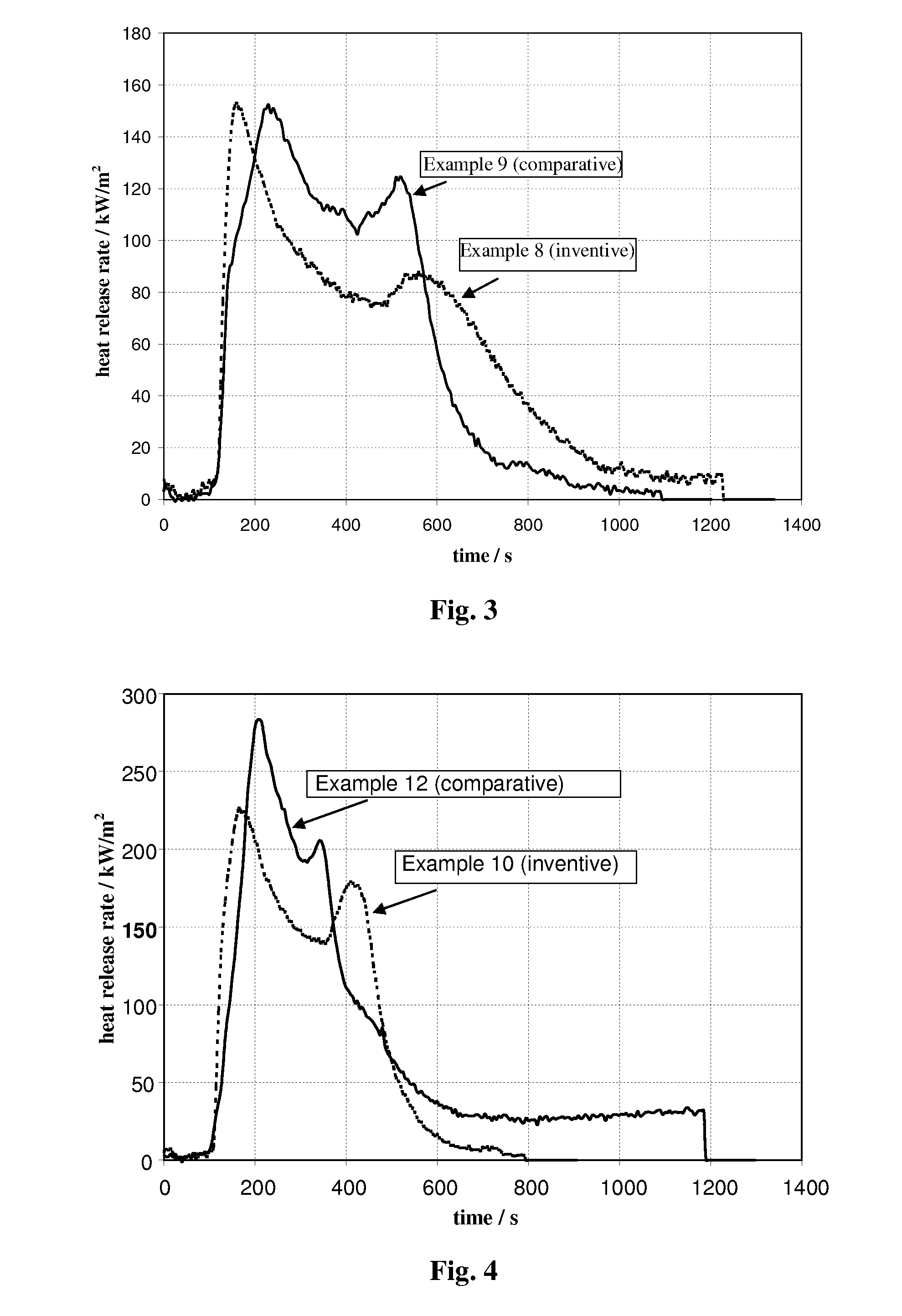Synthetic inorganic flame retardants, methods for their preparation, and their use as flame retardants
a technology of inorganic flame retardants and synthetic inorganic flame retardants, which is applied in the direction of silicon oxides, phosphorus oxyacids, silicates, etc., can solve the problems of destroying the mechanical, rheological or electrical properties of the final product, and the efficiency of commonly used mineral flame retardants such as aluminum trihydroxide (ath) and magnesium hydroxide (mdh), so as to achieve higher flame retardant efficiency and thermal stability
- Summary
- Abstract
- Description
- Claims
- Application Information
AI Technical Summary
Benefits of technology
Problems solved by technology
Method used
Image
Examples
example 1
Inventive
[0100]In this Example, the initial charges to the 20-liter vessel were 4 liters of water, followed by 324 g NaOH. This mixture was heated while stirring to 95° C. at a rate of about 15° C. per minute. At reaching the desired temperature, 413 grams of fine precipitated aluminum trihydrate, and then 587 grams of calcium hydroxide, then 93 g of water glass (Na2Si3O7) sodium silicate solution, having a calculated SiO2 concentration of 27 wt % (available from Riedel-de Haen), were added. This provides a theoretical amount of silicate equivalent to 0.15 mole per mole of synthetic flame retardant, giving the product Ca3Al2(OH)11.4(SiO4)0.15. The mixture was maintained at this temperature, while stirring, for two hours. Results of analytical determinations of this resultant synthetic inorganic modified flame retardant are summarized in Table 1. An SEM picture of the octahedral crystal shapes of this product is shown in FIG. 6. It is to be noted that the “SiO2” concentration is calc...
example 2
Inventive
[0101]In this Example, the initial charges to the 20-liter vessel were 4 liters of water, followed by 444 g NaOH. This mixture was heated while stirring to 95° C. at a rate of about 15° C. per minute. At reaching the desired temperature, 413 grams of fine precipitated aluminum trihydrate, and then 587 grams of calcium hydroxide, then 185 g of water glass (Na2Si3O7) sodium silicate solution, having a calculated SiO2 concentration of 27 wt % (available from Riedel-de Haen), were added. This provides a theoretical amount of silicate equivalent to 0.3 mole per mole of synthetic flame retardant, giving the product Ca3Al2(OH)10.8(SiO4)0.3. The mixture was maintained at this temperature, while stiffing, for two hours. Results of analytical determinations of this resultant synthetic inorganic modified flame retardant are summarized in Table 1.
example 3
Inventive
[0102]In this Example, the initial charges to the 20-liter vessel were 14.2 liters of water, followed by 3.55 kg Solvay liquor with NaOH conc. of 50 wt. %. This mixture was heated while stiffing to 95° C. at a rate of about 15° C. per minute. At reaching the desired temperature, 1850 grams of fine precipitated aluminum trihydrate, and then 2340 grams of calcium hydroxide, then 750 g of water glass (Na2Si3O7) sodium silicate solution, having a calculated SiO2 concentration of 27 wt % (available from Riedel-de Haen), were added. This provides a theoretical amount of silicate equivalent to 0.3 mole per mole of synthetic flame retardant, giving the product Ca3Al2(OH)10.8(SiO4)0.3. The mixture was maintained at this temperature, while stiffing, for one hour. Results of analytical determinations of this resultant synthetic inorganic modified flame retardant are summarized in Table 1.
PUM
| Property | Measurement | Unit |
|---|---|---|
| Temperature | aaaaa | aaaaa |
| Percent by mass | aaaaa | aaaaa |
| Percent by mass | aaaaa | aaaaa |
Abstract
Description
Claims
Application Information
 Login to View More
Login to View More - R&D
- Intellectual Property
- Life Sciences
- Materials
- Tech Scout
- Unparalleled Data Quality
- Higher Quality Content
- 60% Fewer Hallucinations
Browse by: Latest US Patents, China's latest patents, Technical Efficacy Thesaurus, Application Domain, Technology Topic, Popular Technical Reports.
© 2025 PatSnap. All rights reserved.Legal|Privacy policy|Modern Slavery Act Transparency Statement|Sitemap|About US| Contact US: help@patsnap.com



